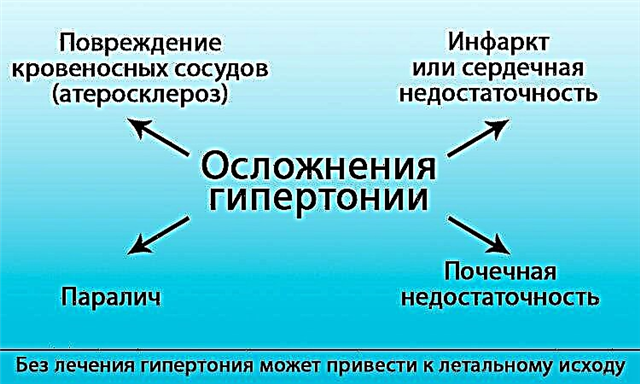Most often, ear inflammation is a secondary disease that develops as a result of complications of acute respiratory viral infections, childhood infectious diseases such as measles, scarlet fever, etc. Otitis media in children is a very common pathology, 90% of the population has experienced ear inflammation before the age of three.

The predisposing factors contributing to its development among children are the following:
- the prevalence of ARVI and other acute infectious diseases among children is several times higher than the incidence of this pathology among adults;
- the anatomical features of the structure of the organ of hearing contribute to the development of stagnation in the tympanic cavity;
- long-term presence of the child in a horizontal state prevents the evacuation of mucus from the auditory tube;
- the child's inability to effectively blow their nose;
- the presence of enlarged adenoids contributes to the narrowing of the lumen of the Eustachian tube and stagnation of mucus in it.
The value of ARVI in the development of otitis media
The presence of ARVI in a child is in itself a reason to be on the lookout for the development of complications such as ear inflammation. Most often, respiratory infections caused by viruses or bacteria in a child proceed with the development of symptoms such as malaise, headache, lack of appetite, sore throat, runny nose, cough, fever up to subfebrile numbers.
If within 1-2 days or even several hours the child develops additional symptoms, it can be assumed that we are talking about the development of some complication.
Ear pain and hearing loss are the most common signs of otitis media in a child.
They are constant regardless of the location of the inflammation. However, the involvement of one or another part of the ear in the process also determines the fact that other symptoms of otitis media in children may differ slightly, depending on the localization of the process.
Clinical symptoms
In most cases, otitis media in a child means inflammation of the middle ear. It is this localization of the process that is typical in the case of complications of ARVI. The development of otitis media is as follows. Under the influence of pathogens, more often viruses, the production of mucus in the nasopharynx area increases, which enters the auditory tube, causing it to narrow. As a result, the ventilation of the middle ear, which is connected to the nasal cavity through the Eustachian tube, is impaired.
These congestion in the tympanic cavity are predisposing factors for the development of inflammatory processes in the middle ear. Already at this stage, the first signs of otitis media in children, pain syndrome and hearing loss are noted. Since the mucous membrane of the tympanic cavity also begins to produce exudate, the transmission of sound signals to the malleus, stapes and incus is difficult. This is what causes hearing loss.
This development of the disease is characteristic of catarrhal otitis media. At this stage, thanks to the protective mechanisms of the body and the treatment carried out, recovery may occur. However, further thickening of the mucus in the tympanic cavity is often noted. Under the influence of bacterial pathogens, Haemophilus influenzae, moraxella, pneumococcus, mucous exudate is transformed into purulent. The disease turns into acute purulent otitis media.
This period is characterized by a more pronounced intoxication. In a child, the intensity of pain in the ear increases, malaise increases, and sleep is disturbed. The development of hyperthermia, sometimes its high numbers, is also a typical symptom of otitis media in a child. With the spread of the process and the accumulation of a sufficient amount of purulent exudate in the tympanic cavity, there may also be such signs of otitis media in children as dizziness, vomiting, and impaired coordination. These symptoms characterize the severe course of the process, since they are more typical for inflammation of the inner ear.
The increased amount of pus puts pressure on the walls of the tympanic cavity, as a result of which the tympanic membrane ulcerates and can rupture. Outside, suppuration is noted, which is another sign of how to recognize otitis media in a child.
Otorrhea is not a necessary symptom for ear inflammation.
It characterizes precisely the development of purulent otitis media. In addition, even just this form of otitis media is not always accompanied by suppuration. In some cases, the outflow of pus is possible not through the perforated tympanic membrane, but into the nasopharyngeal cavity through the Eustachian tube.
The value of otoscopy
 Since the area of the middle ear is inaccessible to direct examination, it is very important to conduct an otoscopy to diagnose the disease. Investigation of the condition of the tympanic membrane using a special instrument, an otoscope, allows you to clarify the diagnosis, determine the form of the disease, catarrhal or purulent, and also assess the condition of the tympanic membrane. The research results are a reliable diagnostic method.
Since the area of the middle ear is inaccessible to direct examination, it is very important to conduct an otoscopy to diagnose the disease. Investigation of the condition of the tympanic membrane using a special instrument, an otoscope, allows you to clarify the diagnosis, determine the form of the disease, catarrhal or purulent, and also assess the condition of the tympanic membrane. The research results are a reliable diagnostic method.
With catarrhal otitis media, the tympanic membrane is retracted into the middle ear, which is due to the reduced pressure in the middle ear cavity. For exudative otitis media, a change is also characteristic of the otoscopic picture. Through the eardrum, the specialist can even distinguish the level of fluid in the tympanic cavity, which changes depending on the change in body position. The very same eardrum during this period is still retracted. With the development of a purulent process, there is a thickening of the mucous membrane of the tympanic membrane, the presence of erosion on the surface, its protrusion into the area of the external auditory canal.
Diagnostics of the disease in infants
In cases where the patient is too young and cannot express his complaints, you can find out that the child has otitis media by the following signs:
- the child's attempts to take a forced position of the body, lying on the affected ear;
- unexpected screams, irritability, characteristic of this particular pathology;
- the child tries to touch the affected organ with his hand;
- pressure on the tragus of the affected ear is accompanied by increased pain and, as a result, crying or crying of the child.
Typical signs of otitis media
Summing up, we can say that the main symptoms of childhood otitis media, depending on the age of the child and the degree of damage, look like this:
- ear pain and congestion;
- hearing loss;
- irritability;
- anxiety;
- constant head movements;
- the desire to touch or rub a painful organ;
- sleep disturbance;
- poor appetite;
- refusal to eat;

- an increase in body temperature to subfebrile numbers;
- suppuration in the form of a yellowish, greenish or cloudy discharge;
- dizziness;
- vomit;
- lack of coordination;
- increased pain when pressing on the tragus;
- increased body temperature.
Features of otitis externa
In the presence of inflammation of the external ear, in addition to pain in the area of the external auditory canal or auricle, hyperemia and swelling of this area is noted. Hearing loss can be insignificant and be noted with sufficient infiltration in the external auditory canal. The appearance of a symptom is due to a sharp narrowing of the sound-conducting part of the hearing organ. In this case, it is possible to suspect and determine otitis media in a child by enlarged regional lymph nodes.
You can also find out that a child has otitis media by the results of laboratory diagnostics.A general blood test during the development of acute purulent otitis media or external corresponds to the course of the disease and is characterized by leukocytosis, an increased ESR value. These indicators testify in favor of the inflammatory nature of the disease.
Catarrhal otitis media can proceed without changing the results of laboratory diagnostics.
It is important for parents to know how otitis media manifests itself in children, since untimely and incorrect treatment is the most common reason for the transition of the disease to a chronic form and the development of other serious complications that are life-threatening. The appearance of the first signs of the disease is a serious reason to seek help from an otolaryngologist.




